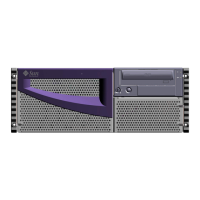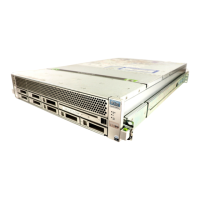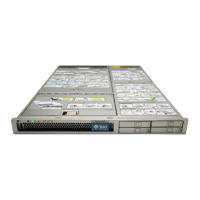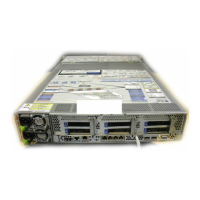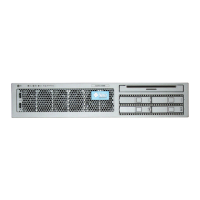20 Sun Fire V890 Server Owner’s Guide • September 2004
This change does not take effect until you reboot the system.
Remote System Control Software
Remote System Control (RSC) software is a secure server management tool that lets
you monitor and control your server over a serial port or a network connection. RSC
provides remote system administration for geographically distributed or physically
inaccessible systems. The RSC software works with the system controller card on the
Sun Fire V890 system I/O board. The system controller card provides a private
Ethernet connection to a remote console, and a serial connection to a local
alphanumeric terminal.
Once RSC is configured to manage your server, you can use it to run diagnostic tests,
view diagnostic and error messages, reboot your server, and display environmental
status information from a remote console.
RSC provides the following features:
■ Remote system monitoring and error reporting (including diagnostic output)
■ Remote reboot, power-on, and power-off functions
■ Ability to monitor system environmental conditions remotely
■ Ability to run diagnostic tests from a remote console
■ Remote event notification for overtemperature conditions, power supply failures,
fatal system errors, or system crashes
■ Remote access to detailed event logs
■ Remote console functions via Ethernet or serial port
For additional details, see “About the System Controller Card and RSC Software” on
page 59 and “About Sun Remote System Control Software” on page 133.
Dual-Loop Enabled FC-AL Mass Storage
Subsystem
The system’s dual-ported FC-AL disk drives and dual-loop enabled backplanes can
be combined with an optional PCI FC-AL host adapter card to provide for fault
tolerance and high availability of data. This dual-loop configuration enables each
disk drive to be accessed through two separate and distinct data paths, providing:
■ Increased bandwidth – Allowing data transfer rates up to 200 Mbytes per second
versus 100 Mbytes per second for single-loop configurations
■ Hardware redundancy – Providing the ability to sustain component failures in one
path by switching all data transfers to an alternate path

